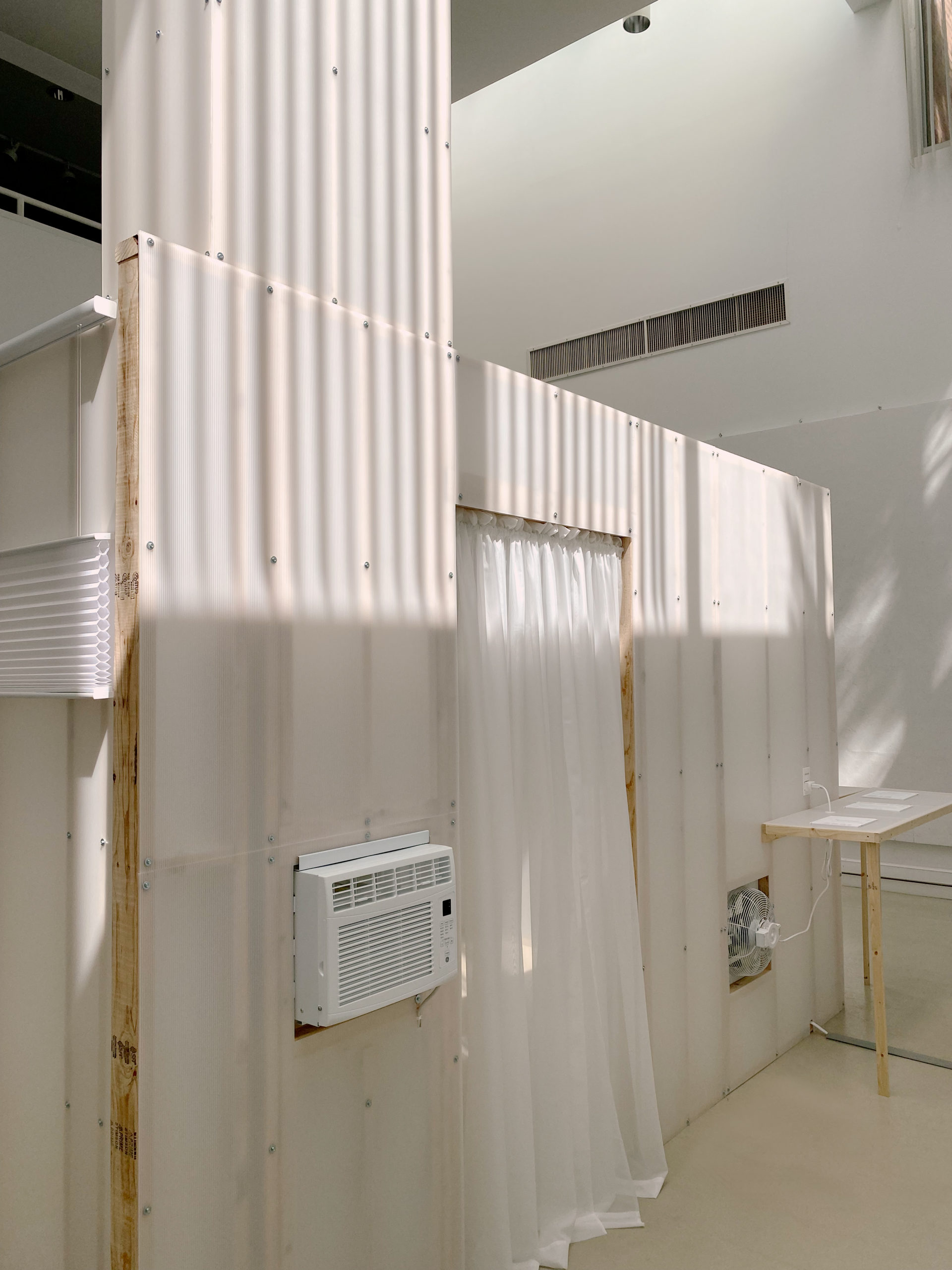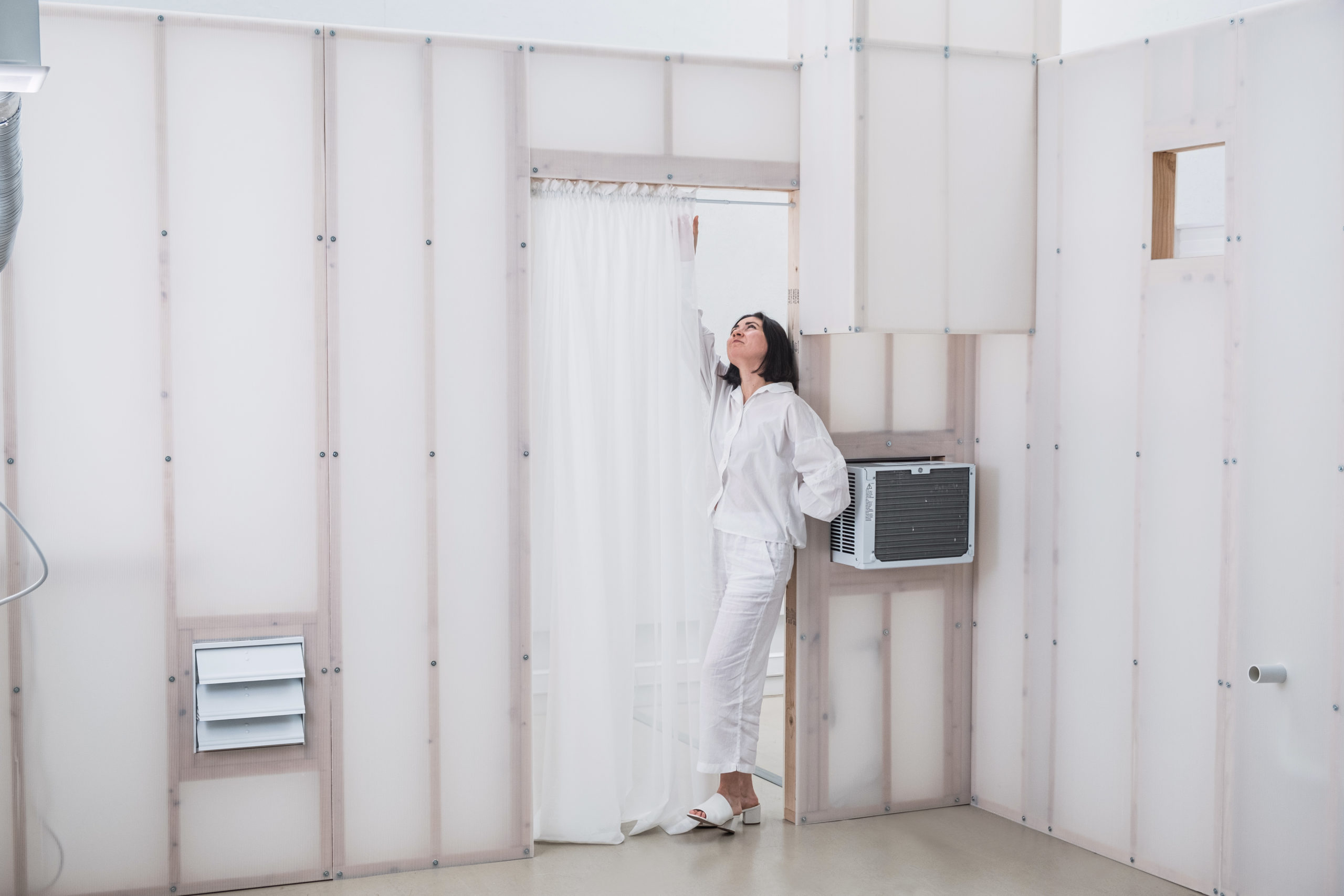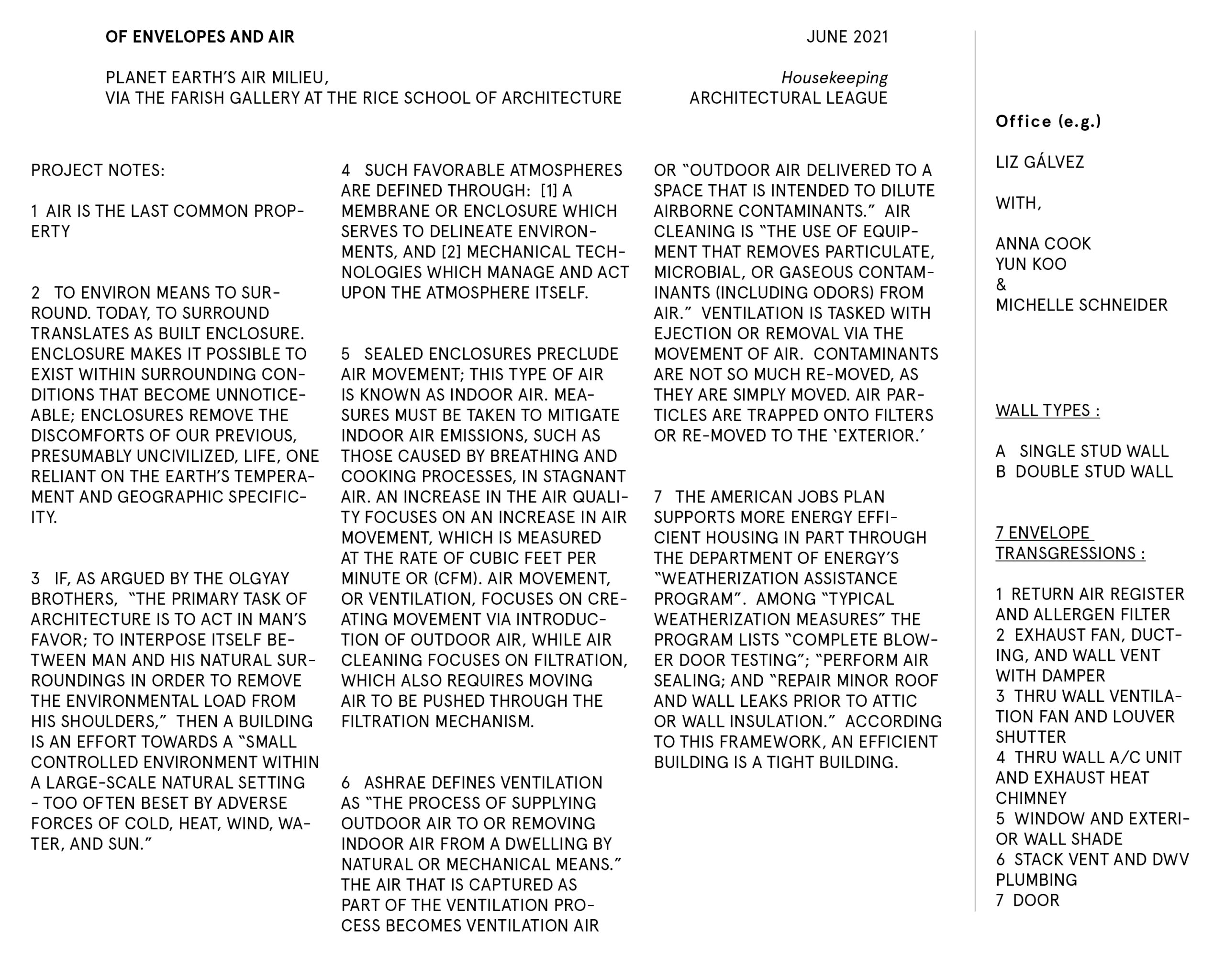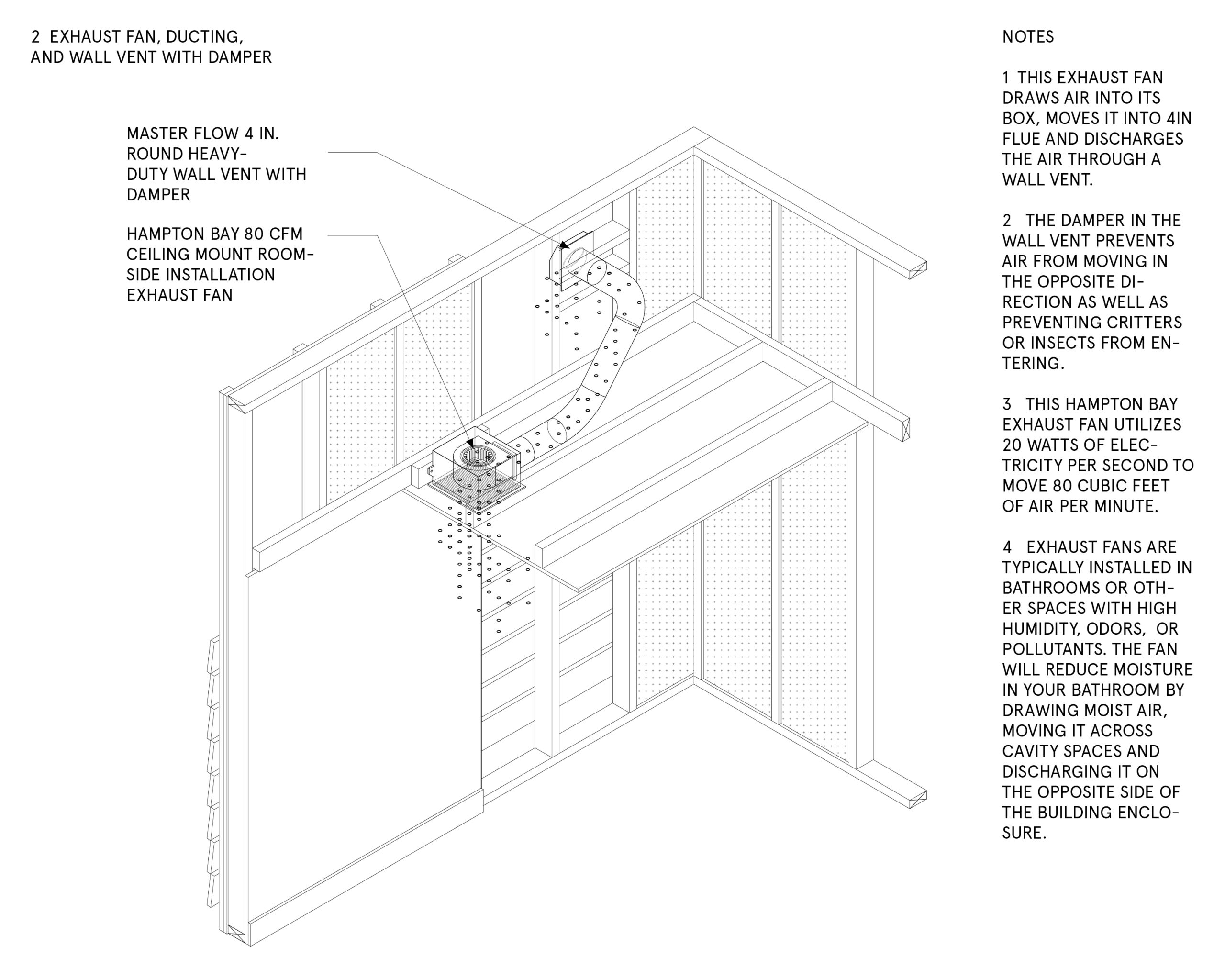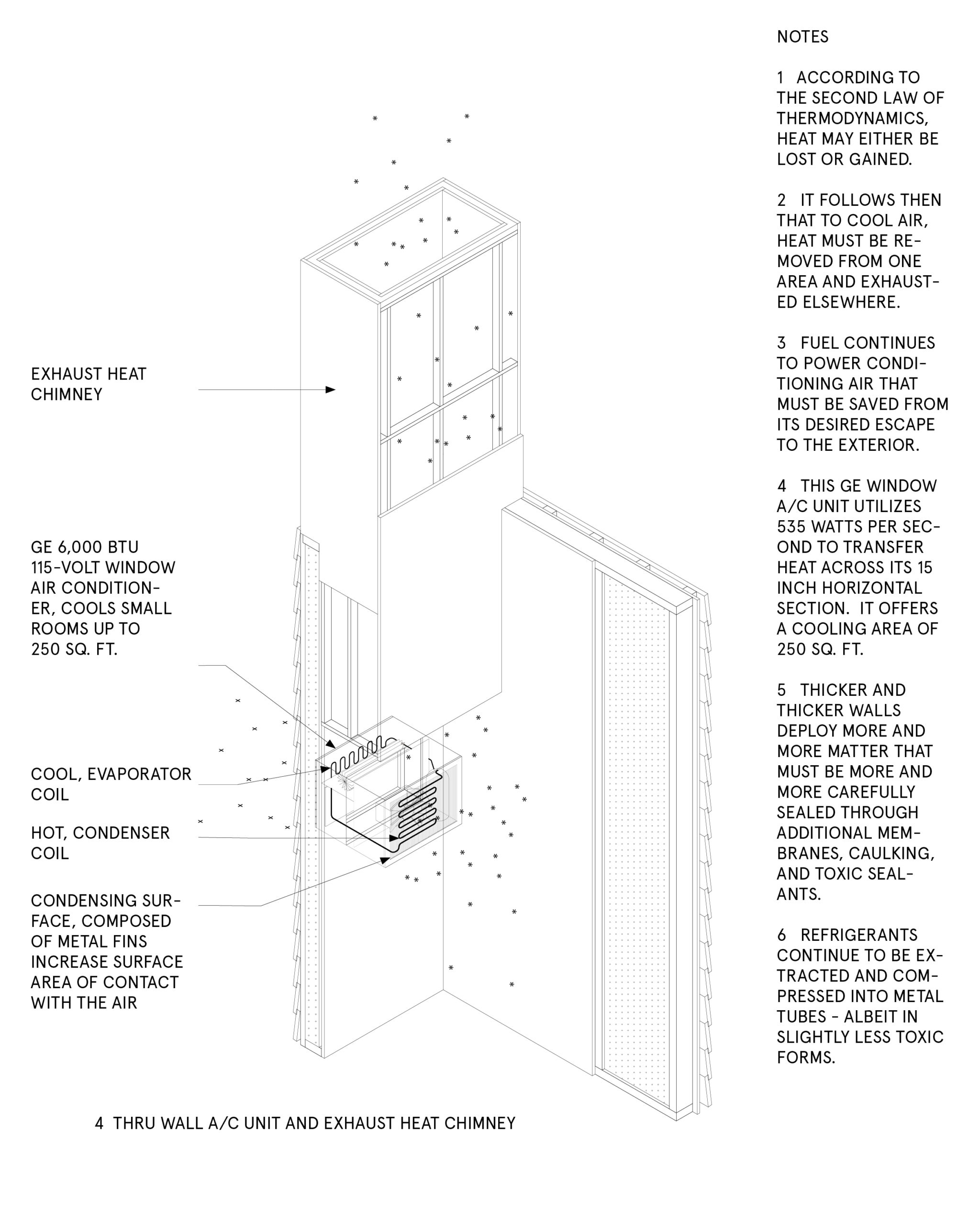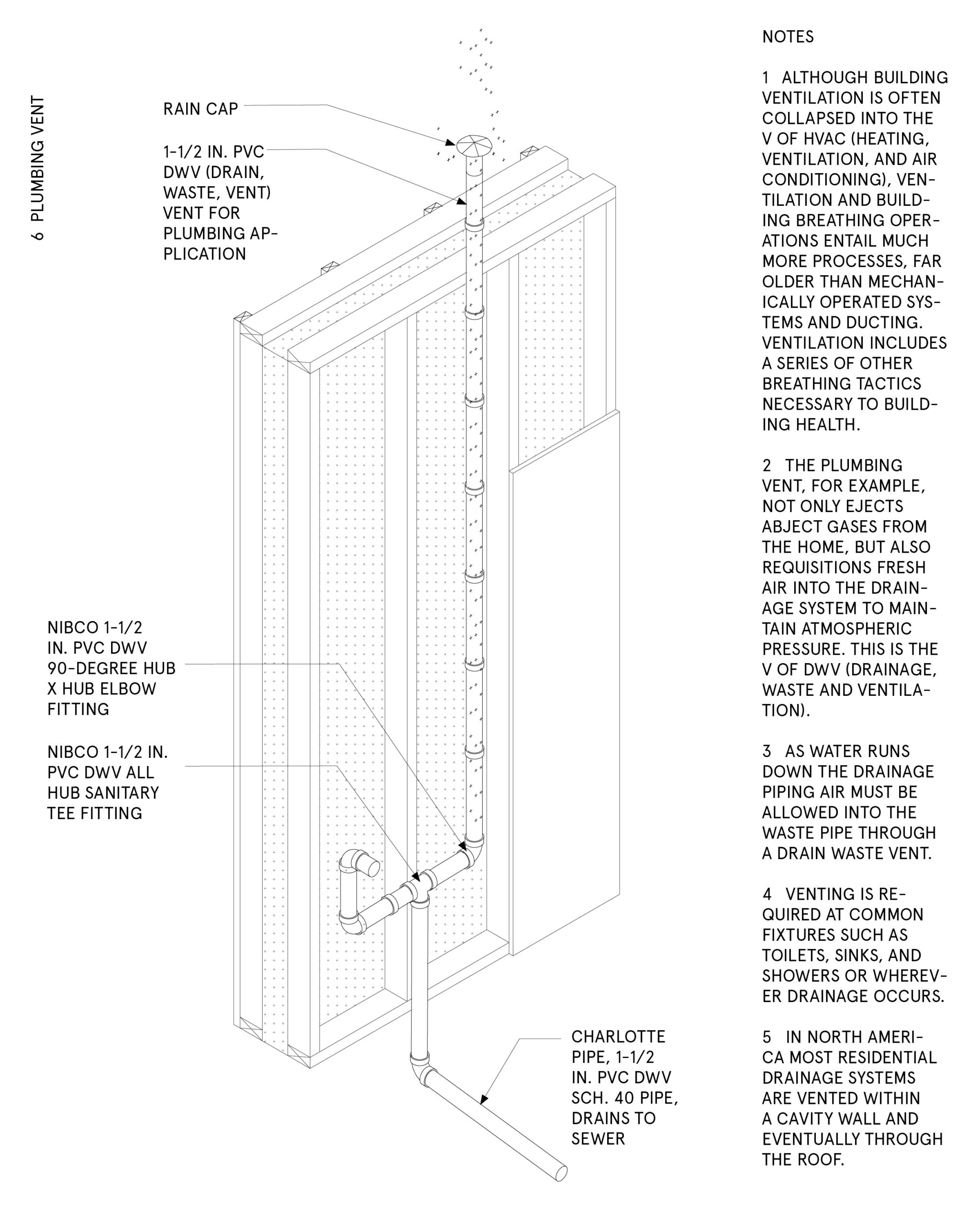Office e.g.: Of Envelopes and Air
One of six installations for the digital exhibition by winners of the 2021 League Prize.
“Air is the last common property.”
—Elias Canetti, The Conscience of Words
Insulation, resistance value, vapor barrier: Contemporary rhetoric around the building envelope tends to present its role primarily as one of separation. The narrative of the tight building, realized in the service of energy efficiency, perpetuates our understanding of the envelope as a modern agent: the membrane materializes a separation of culture from “nature,” or that which lies outside the human realm. The tight building isolates. It separates the civilized world of the controlled, conditioned, and amenable interior from the ever-changing, uncontrolled, and vast— if not hostile—exterior.
Yet there exists another, often overlooked, narrative. Through the medium of air, this installation explores the transgressive relationship between our atmosphere and the building envelope. The plumbing vent, for example, not only ejects abject gases from the interior, but also pulls fresh air into the drainage system. Attic ventilation deploys extraction fans and vents to keep cavity spaces ventilated, cool, and dry. A plethora of pipes and flues penetrate the “purity” of either edge of the building enclosure, if not both—edges that are often represented as unpunctured thick black lines enclosing space. A rereading of the building envelope as transgressive resists narratives of increased separation and isolation from an exterior nature towards an already “being with” nature and beneficial hybridity of our “interior” atmospheres.
In this installation, seven envelope transgressions work towards looser conclusions. Of Envelopes and Air locates literal holes in the envelope membrane by focusing on existing processes of building breathability to ask if increased tightness and separation from the natural world are not actually counterintuitive as we seek more radical and environmentally sound ways of being in our buildings.
Project Team: Liz Gálvez, Anna Cook, Yun Koo, and Michelle Schneider





